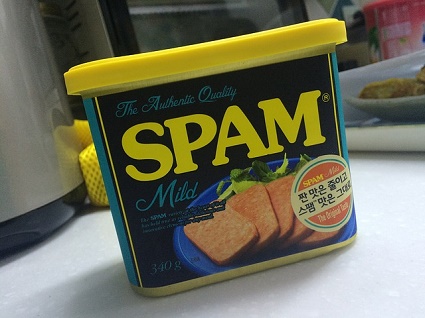Recently a team member talked with an organization that wanted to get the word out about an event. Top suggestion? Send an email blast to the house list — the people who shared their emails with the organization.
“We don’t want to spam people,” the reps from the organization said doubtfully.
Sending an event notification to people who have asked you to send them notifications is just about the antithesis of spam. But you see the term used more broadly now. We’ve seen discussions not just of spam email, but of calendar spam, spammy websites, spam social media posts and spam comments.
How can you be sure that your digital marketing isn’t spam?
First, it’s important to understand the actual legal definition of spam. Spam is unsolicited bulk emails — emails sent to a large list of people who have not given permission to the sender.
The CAN-SPAM Act of 2003 (Congress apparently has people whose job it is to come up with cute acronyms for their bills; the full name is “Controlling the Assault of Non-Solicited Pornography and Marketing“) gives specific rules that must be followed, and there are fines of as much as $16,000 waiting for people who get caught breaking the rules.
The rules:
- Honesty is the top requirement. You must have full and accurate information, including the name of your business, your email address, and your physical address. Your subject line can’t be deceptive (if you say you’re sending iPads to everyone, you have to do it) and your content has to be real.
- Consent is the other main issue. Any bulk email you send without consent is spam, by definition. But sometimes people give their email address and forget, so your email must clearly say what recipients have to do to get you to quit sending them things. It’s illegal to keep sending things to people who opt out.
Is it only email?
Legally, yes, spam is just email. However, internet users are perceiving other kinds of marketing, from social media to websites themselves, as spam.
At this point, it’s only electronic marketing that faces this challenge. We don’t hear people say, “I hate being spammed by billboards” or “That company has spammy commercials that ruin my football viewing experience.” However much they avoid ads offline, consumers don’t identify those unwanted, unsolicited messages as spam.
While your online ads and promotional tweets aren’t legally defined as spam, the fact that people in your target market think of them as spam means, at the very least, that you’re wasting the resources you put into those ads.
Modern consumers don’t like ads.
Modern consumers like being shown cool things that they — not everyone in the world, but themselves in particular — might like to buy. They like being offered solutions to problems they’re facing. They like getting discounts on things that they were already interested in buying.
But they don’t like ads. Some 44% of Americans use ad blockers, and let’s face it — many of the rest would do so if they knew how. Services like Hulu and YouTube charge users for the privilege of avoiding ads.
It makes more sense now to present your audience with cool stuff they specifically might like to buy and solutions to their problems, not with ads. And it makes even more sense to make sure that the content you’re presenting is not presented to people who aren’t looking for it.
Inbound marketing — marketing content that is found by the people who want it — is more effective now that interruption marketing that seeks to capture the attention of people who aren’t looking for it.
Ads have their place.
Here’s an ad we created recently:

This is an ad for a product created for a specific target market. It will be shown only to people who can reasonably be expected to want the item, and the information it includes is simply the product and how people can get it. There is no sales pitch, because the manufacturer knows that the target audience wants this item.
You may be in the same position. You know that the members of your gym want a kettlebell class, so you create an ad giving the times of the new kettlebell class and present it to your members the way they want it presented: in the newsletter they signed up for and Facebook ads directed toward the people who like your Facebook page.
Or you know that your target audience has to comply with new sterile packaging regulations, and you have a system that will help them do so cost effectively. You send them this information and, because they’ve been up nights worrying about it, they’re happy to see that ad.
Make sure your content isn’t seen as spam.
Spam is about consent, not content. Provide content that people can find easily when they want it, send it to people you are quite sure want the information, and keep the frequency manageable. Be persistent, but don’t overwhelm.



Leave a Reply